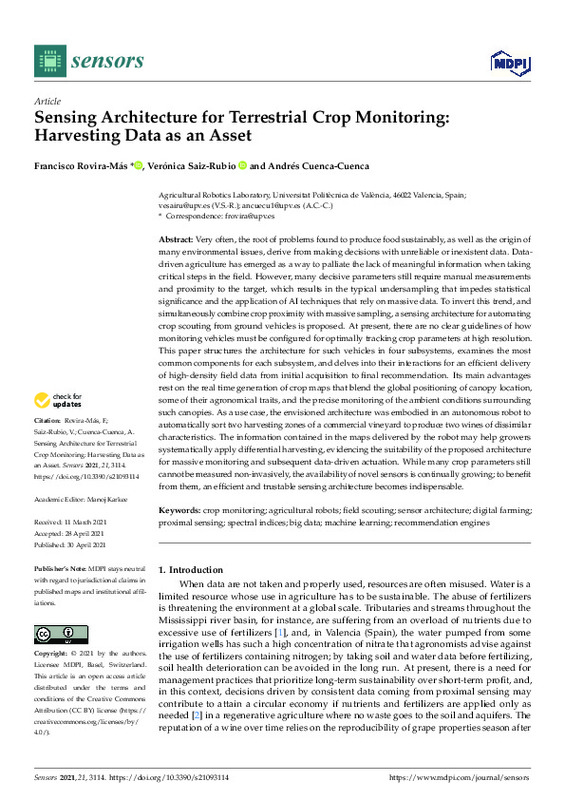JavaScript is disabled for your browser. Some features of this site may not work without it.
Buscar en RiuNet
Listar
Mi cuenta
Estadísticas
Ayuda RiuNet
Admin. UPV
Sensing Architecture for Terrestrial Crop Monitoring: Harvesting Data as an Asset
Mostrar el registro completo del ítem
Rovira Más, F.; Saiz Rubio, V.; Cuenca-Cuenca, A. (2021). Sensing Architecture for Terrestrial Crop Monitoring: Harvesting Data as an Asset. Sensors. 21(9):1-24. https://doi.org/10.3390/s21093114
Por favor, use este identificador para citar o enlazar este ítem: http://hdl.handle.net/10251/176447
Ficheros en el ítem
Metadatos del ítem
| Título: | Sensing Architecture for Terrestrial Crop Monitoring: Harvesting Data as an Asset | |
| Autor: | ||
| Entidad UPV: |
|
|
| Fecha difusión: |
|
|
| Resumen: |
[EN] Very often, the root of problems found to produce food sustainably, as well as the origin of
many environmental issues, derive from making decisions with unreliable or inexistent data. Datadriven
agriculture has emerged ...[+]
|
|
| Palabras clave: |
|
|
| Derechos de uso: | Reconocimiento (by) | |
| Fuente: |
|
|
| DOI: |
|
|
| Editorial: |
|
|
| Versión del editor: | https://doi.org/10.3390/s21093114 | |
| Coste APC: |
|
|
| Código del Proyecto: |
|
|
| Agradecimientos: |
|
|
| Tipo: |
|









